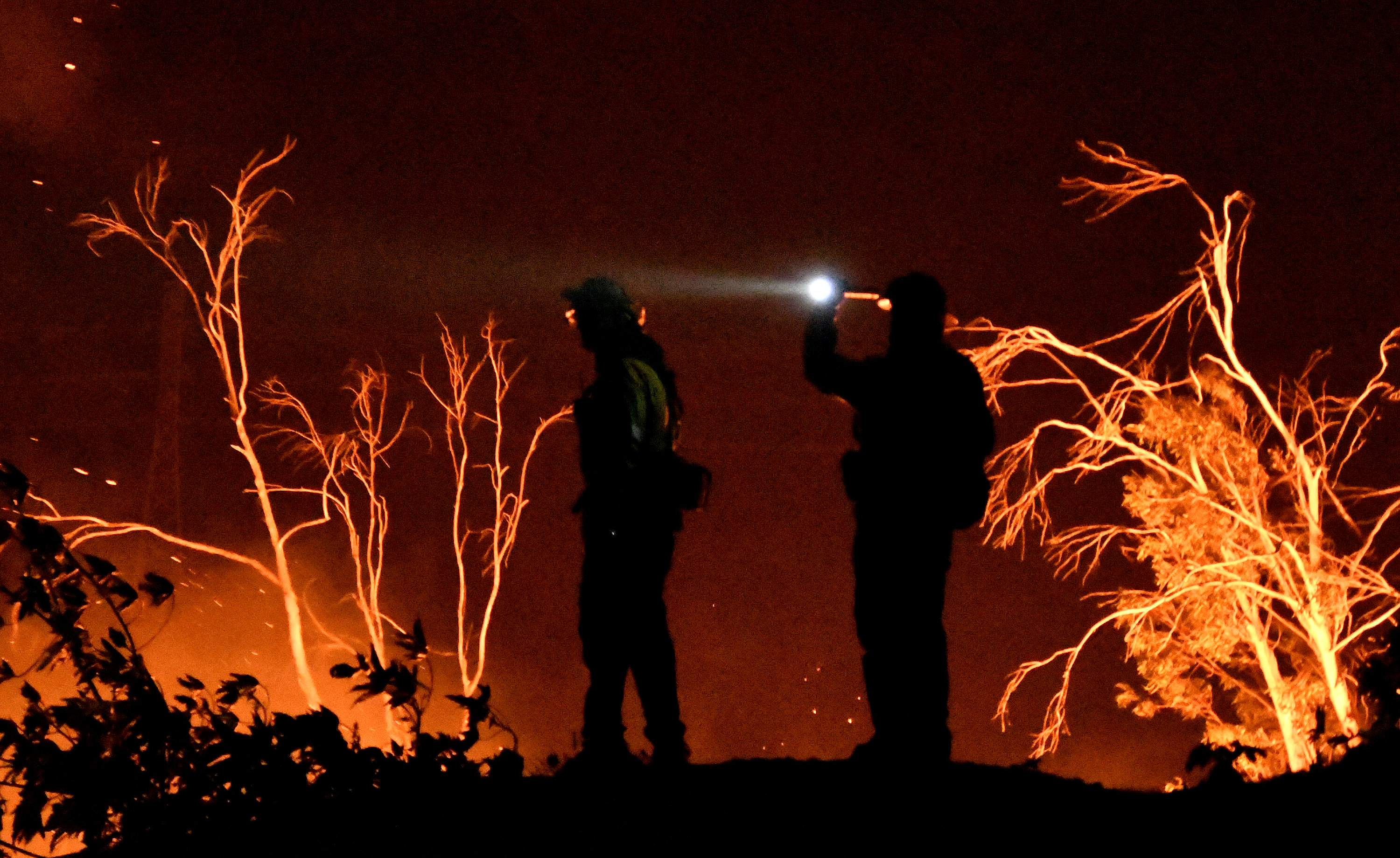
By Rollo Ross and Alan Devall
SANTA BARBARA, Calif (Reuters) – Rescue crews in Southern California resumed on Thursday the arduous task of combing through tons of debris for survivors from deadly mudslides that struck along the state’s picturesque coastal communities.
Seventeen people are confirmed dead and another 17 people are missing after a wall of mud roared down hillsides in the scenic area between the Pacific Ocean and the Los Padres National Forest, according to authorities in Santa Barbara County.
“Right now, our assets are focused on determining if anyone is still alive in any of those structures that have been damaged,” Santa Barbara County Sheriff Bill Brown told Los Angeles television station KCAL.

A kitchen in a home on Glen Oaks Road damaged by mudslides in Montecito, California, U.S., January 10, 2018. Kenneth Song/Santa Barbara News-Press via REUTERS
Some 500 rescuers using search dogs, military helicopters, and thermal imaging equipment are on scene.
Search and rescue efforts have been slow as crews have to navigate through waist-deep mud, fallen trees, boulders and other debris.
“Another tough day in Santa Barbara County as Search and Rescue, Fire and Law Enforcement personnel from across our county and our neighboring counties searched for survivors and evacuated people,” the sheriff’s office said on its Twitter feed late Wednesday night.
The devastating mudslides, which were triggered by heavy rains early on Tuesday, roared into valleys denuded by historic wildfires that struck the area last month.
The debris flow from the mudslides has destroyed 100 homes, damaged hundreds of other structures and injured 28 people, said Amber Anderson, a spokeswoman for the Santa Barbara County Fire Department.
Among the damaged properties were historic hotels and the homes of celebrities including television personality Oprah Winfrey and talk-show host Ellen DeGeneres, who both live in the upscale hillside community of Montecito.
DeGeneres said on her talk showing airing Thursday that the picturesque town of 9,000 is a “tight-knit” community.
“It’s not just a wealthy community, it’s filled with a lot of different types of people from all backgrounds,” she said. “And there are families missing, there are people who are missing family members…it’s catastrophic.”

A car sits tangled in debris after being destroyed by mudslides in Montecito, California, U.S., January 10, 2018. Kenneth Song/Santa Barbara News-Press via REUTERS
Last month’s spate of wildfires, including the Thomas Fire – the largest in the state’s history – stripped hillsides of vegetation and left behind a slick film that prevented the ground from absorbing rainwater.
“First we got burned out at our ranch that caught on fire and now we’re flooding, so the last month has been pretty bad,” said Charles Stoops, as he stood in front of his house, which was surrounded in mud three feet (nearly a meter) deep.
(Additional reporting by Keith Coffman in Denver, Alex Dobuzinskis and Dan Whitcomb in Los Angeles, Sharon Bernstein in Sacramento, Gina Cherelus and Peter Szekely in New York, Rich McKay in Atlanta and Brendan O’Brien in Milwaukee; Writing by Scott Malone and Dan Whitcomb; Editing by Tom Brown, Leslie Adler, William Maclean)












